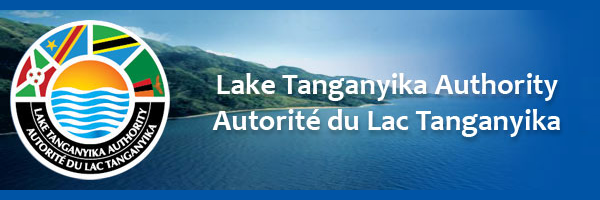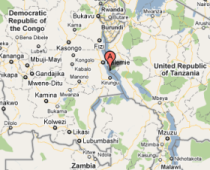Investment opportunities in Lake Tanganyika and Victoria are still limited by security and environmental threats
Source : http://www.independent.co.ug
The East African Community (EAC,) in an attempt to boost investment and the livelihood of more than the 20 million people whose livelihoods depend on Lake Tanganyika and its surroundings, organized a conference entitled, “Unlocking the Overflowing Trade and Investment Opportunities in the Lake Tanganyika Basin,” for the first time on Nov.28-29 in Bujumbura.
In his opening speech, Burundi President and the outgoing Chair of the EAC Heads of State Summit Pierre Nkurunziza appealed to investors from the EAC, Common Market for Eastern and Southern Africa (COMESA), Southern Africa Development Community (SADC), Europe, North America, China, Japan and India to exploit the investment opportunities in the lake’s basin.
“The development of transport on the lake, improvement of existing ports and the construction of new ones, and investment in the fishing industry would open up Lake Tanganyika basin as a whole,” said Nkurunziza. “The commercial and cultural exchanges between the three communities—[EAC, SADC, COMESA]—will accelerate the integration through the tripartite free trade zone,” he said.
Nkurunziza pointed out that the lake—also bordered by DRC, Zambia, Tanzania—forms a unique ecosystem, with its vast heritage of flora and fauna found in several forest reserves and natural parks, including the Kibira Forest, Kigwena Forest Reserve, and Rukoko Reserve in Burundi; Mahale Mountains National Park in Tanzania; the Nyungwe Forest between Rwanda and Burundi; Nsumbu National Park in Zambia, and the wetlands of Malagarazi shared by Tanzania and Burundi.
These areas, he added, are also rich in mineral resources such as nickel, diamonds, gold, iron, cobalt and oil and agricultural resources such as palm oil, sugar, fruits and vegetables.
Speaking at the same conference, Burundi’s Minister for EAC Affairs Hafsa Mossi added that Lake Victoria—which borders Kenya, Uganda and Tanzania—also has a “vast potential to feed the region [and] produce a surplus for export.”
“The two great lakes and their basins hold potential that goes beyond sustaining the livelihoods of their specific inhabitants,” she said. “With sustainable management and rational utilization of their resources, they would yield food sufficiency and surplus production for export.”
Mossi called for cooperation among the countries that share the lakes in the sustainable utilization of resources, including the conservation and protection of the delicate ecosystems. Cooperation, she said, was particularly necessary in the areas of joint marketing strategies and promotion of investments and trade in the two basins.
Activities, she highlighted, have included the ongoing joint negotiations of the Economic Partnership Agreement with the European Union. “Breakthroughs have also been made towards the conclusion of tailor-made trade and investment agreements with the leading world markets, USA, China, India and other strategic markets,” said Mossi.
Despite the EAC’s heavy call for investment, there are outstanding security and environmental issues that need to be addressed. According to Gerson Fumbuka, a maritime security officer at Lake Victoria Basin Commission (LVBC) cases of piracy have limited vessels from carrying goods and people in the area, and police remain poorly equipped to handle this threat. The situation, says Fumbuka, is consequently, “a pity in terms of trade and tourism.”
On the other hand, Lake Tanganyika’s biggest threat stems from its rising water temperatures. Geologists from Brown University in the U.S. recently revealed that at 26 degrees Celsius (78.8°F), temperatures are the warmest it’s been for a millennium and a half. This has impacted Tanganyika’s unique ecosystem by affecting necessary nutrients for the lake’s ecosystem.
Three new invasive plant species—Water Hyacinth, Mimosa Diplotricha, and Mimosa Pigra—have also recently been discovered in the lake. An invasive species is an animal or plant that is introduced into a new area where it does not occur naturally. If the introduction occurs without the accompaniment of its pests and diseases that keep the species under control in its natural range and if it is able to survive, establish and spread it can cause damage to biodiversity and peoples’ livelihoods or development. “It is thus a threat to the coasts, wetlands and inflowing waters of Lake Tanganyika in all four riparian countries,” says Henry Mwima, the executive director of Lake Tanganyika Authority (LTA).
Despite the challenges, the two lakes are receiving help from the beneficiary governments and development partners. Fumbuka said that with regard to Lake Victoria, the EAC enacted the Lake Victoria Transport Act in 2007, which intends to deploy new boats to patrol the lake.
“We have already brought [lake security] to the attention of the council of ministers and they directed Lake Victoria Basin Secretariat to institute a framework, which will be put in Lake Victoria and other inland waters to address the issue of personnel and equipments,” said Fumbuka.
The partner states, he said, will purchase state of the art equipment, including boats, which will help to fight piracy and carry out search and rescue activities—currently a big challenge to the people using the lake. “We are going to have boats and these boats will be equipped with personnel who are capable of assisting in any eventualities,” said Fumbuka, adding that the personnel will also receive heavy training to perfect their job.
As part of ensuring safety on Lake Victoria, the commission is carrying out an awareness program in all the five partner states of the EAC. Two sensitization campaigns have been held, one in Kenya and another one in Burundi. Last week, a similar campaign was held in Uganda and the team is expected to come to Kigali in the coming week to conduct the same exercise.
Actions are also being taken to harmonize national legislations amongst countries that border Lake Tanganyika in order to minimize conflicts that could arise from the lake’s resources.
Moreover, with the help of Nordic Fund for development and the African Development Bank, LTA is working with communities to identify and fund projects that would support socio-economic development in the lake basin.
If such actions can prove fruitful, both Lake Victoria and Tanganyika offer an abundance of resources. Lake Victoria Fisheries Organization (LVFO), another EAC institution charged with promoting fisheries in the lake, says the lake yields between 800,000 – 1 million tons valued at $350 – 400 million at the beach, with export earnings estimated at $250 million annually.
The fishery is supported by three main important fish stocks—the Nile perch, Rastrineobola argentea and Nile Tilapia. Over 75 percent of the Nile perch is directly sold to the fish processing factories for export while Dagaa and tilapia are serving the regional and local markets.
Unlike Lake Victoria, Lake Tanganyika yields between 165,000 to 200,000 tons of fish are harvested from the lack each year
Document Actions













